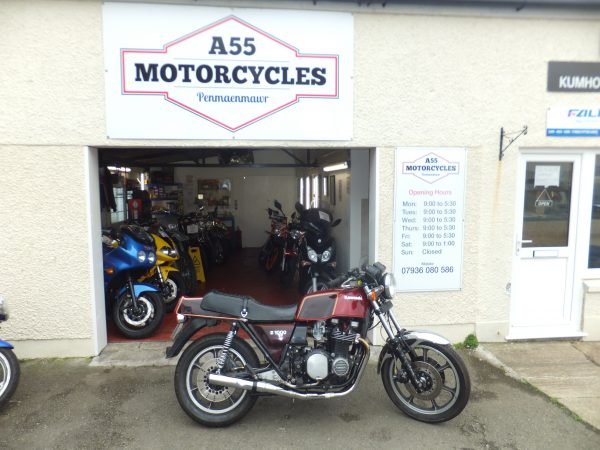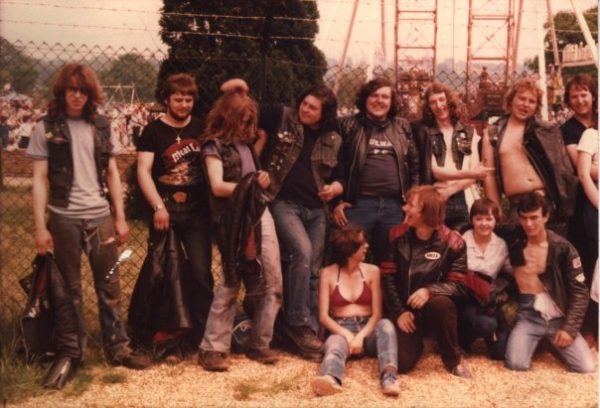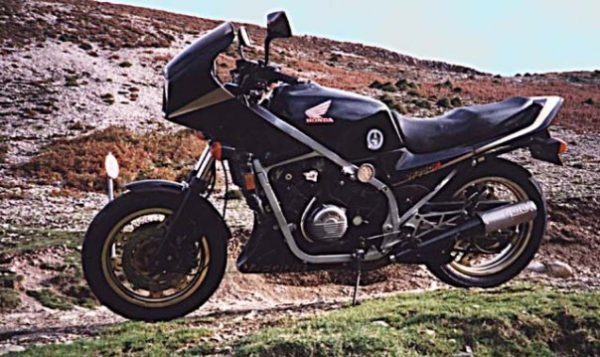In the time I have been in the Motorcycle trade I have seen many changes in the bikes and indeed the people who ride them obviously some of these changes are purely due to changes in fashion, while others are due to the massive advances in technology that have gone on in the last 38 years.

In the late 70’s and early 80’s there was still a large number of people who relied on two wheels as their only form of transport, using little commuter bikes like Kawasaki’s KC100 or Z200’s to travel to work, the shops and indeed on holiday during the summer. It is quite surprising how much fun can be had on a tiny commuter bike on a long journey, as the lack of motorway cruising ability means you have to look to A and B roads for your journey and believe me you see so much more of the country at an average of 45-50 mph pootling down a B road, as less traffic and the slower speed allows you time to appreciate the surrounding countryside. Rather than being focused purely on three lanes of black top crammed with trucks and cars, all of which seem to be trying to kill you. There were still a surprising number of British bikes in daily use by ageing Rockers and with the New Wave of British Heavy Metal music, a whole new generation of leather wearing teenagers was bought into the biking scene, the Biker scene was born.

Then with the advent of the first modern Superbike, Kawasaki’s seminal GPZ900R in 1984 a shift from the Cafe Racer toward the street GP star started. This bike started a revolution in bike design as all the major Japanese factories fought for the top spot in the sales charts. Technologically, in to 80’s, bikes shot forward, with more acronyms than you could keep up with, stickers appearing on your bike, advertising things that no one really understood like AVDS, YPVS, SEPC, TRAC, and EXUP. Realistically, though motorcycle design passed through several dead ends like 16 inch front wheels, designed to make your bike turn in faster, which they did, but a little too fast on many occasions, and anti-dive mechanisms, that had the effect of ‘locking’ the front suspension just when you really needed it.

Other things have changed a bit too! If you consider that the rear tyre on an early Kawasaki Z1, was a 120/90 18, 10mm slimmer than the rear tyre on a modern 125cc bike, and made of a rubber compound that was ‘made to last’, mounted on what was essentially a large bicycle wheel, with suspension and brakes that were at best adequate. Yet no one thought anything about chucking the bike through the bends with the steering bucking in your hands and the footrests sparking, in a pair of jeans, leather jacket and Dr Martins in the wet or dry. Today’s power ranger look alike rider dressed in a one piece suit with CE approved armor, potentially fitted with air bags, has 180 or even 190 section tyres at the back, 60-70 mm wider, made of rubber that literally sticks like snot to the road by comparison, whatever make or style you buy. These are mounted on cast wheels, that are both stiff and very light, with brakes that are so fiercely powerful, you can only really use them with confidence if the bike is equipped with anti-lock brakes, you’d have been lucky to find a bike that could even lock the front wheel back in the 70’s!

Suspension technology, has also made a quantum leap forward, in the early 80’s it was still essentially the same as any bike made in the late 50’s with a pair of poorly damped shocks at the back and equally spindly crude forks up front, often so harsh that even the smallest bump in the road, rattled your teeth and shock you off line in the middle of a corner and had no adjustment at all. Development has changed this hugely, first cantilever mono-shocks appeared, followed by rising rate linkages, and adjustable damping for shocks. This was initially developed for the most suspension testing type of racing, motocross, but rapidly spread to all but the most basic commuters and scooters. Front suspension development, turned the forks upside-down and added damping that acted differently depending on whether the fork was compressing or re-bounding and also has adjustable spring pre-load. While, today’s superbikes are moving toward electrically adjusted front and rear suspension, coupled to, not one, but several computers, that offer a near magic carpet ride over even the most poorly kept modern road.
But, funnily enough, recently there has been a massive resurgence in people looking at 70’s and 80’s bikes despite their shortfalls in brakes suspension and engine performance and I suspect that this is more about the fact that older bikes are a much more involving experience, than because at the moment they are appreciating in value and trust me 70mph on an old bike feels much more exciting than a modern missile at 140mph……..
2 responses
When I was getting back into biking in 2009. I test rode a couple bikes. They were both new. One was superb and the better bike. I bought the other as I felt involved rather than there as a passenger.
People choose older bikes because they have a distinct design and are more reliable.
It’s always the electrics that go first!